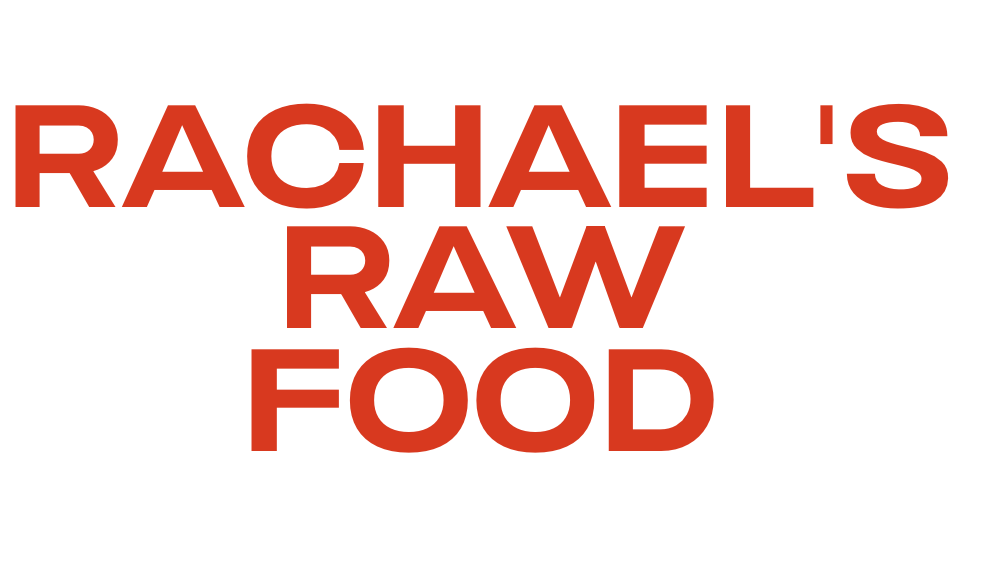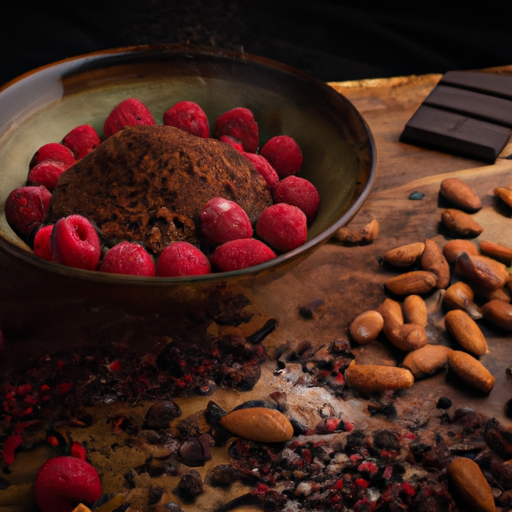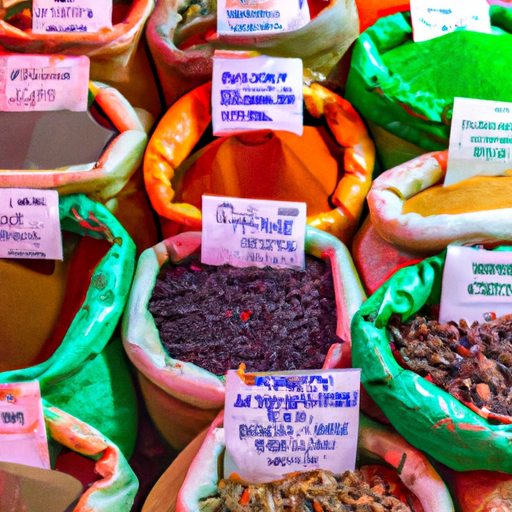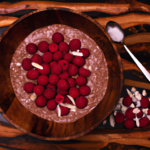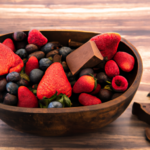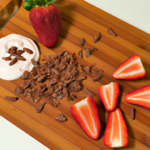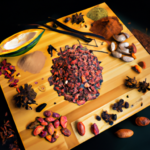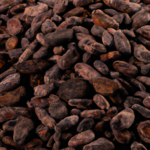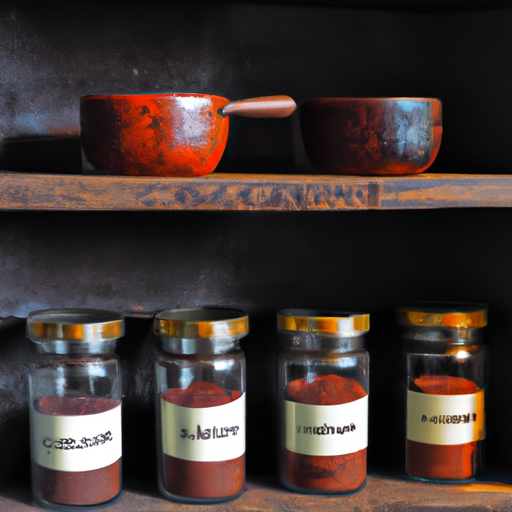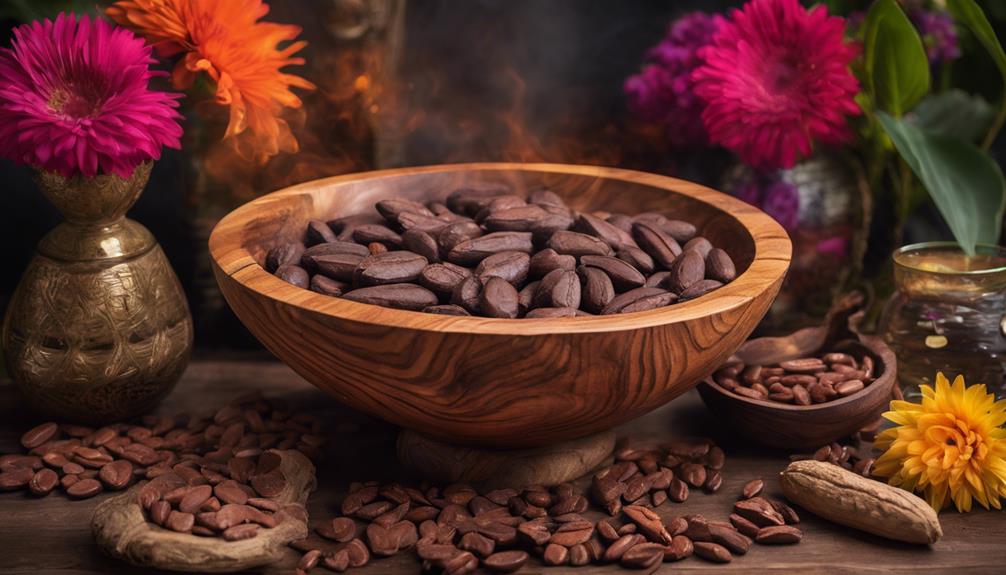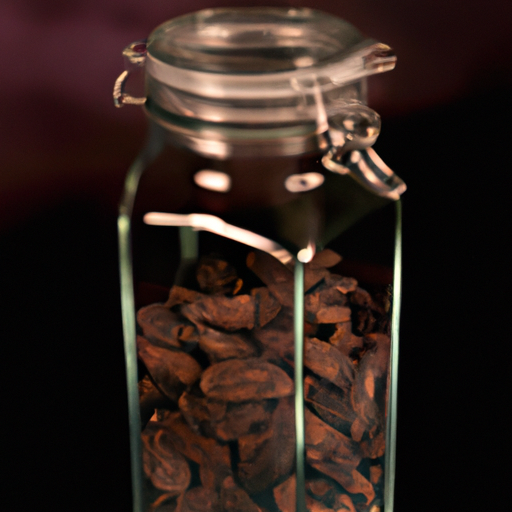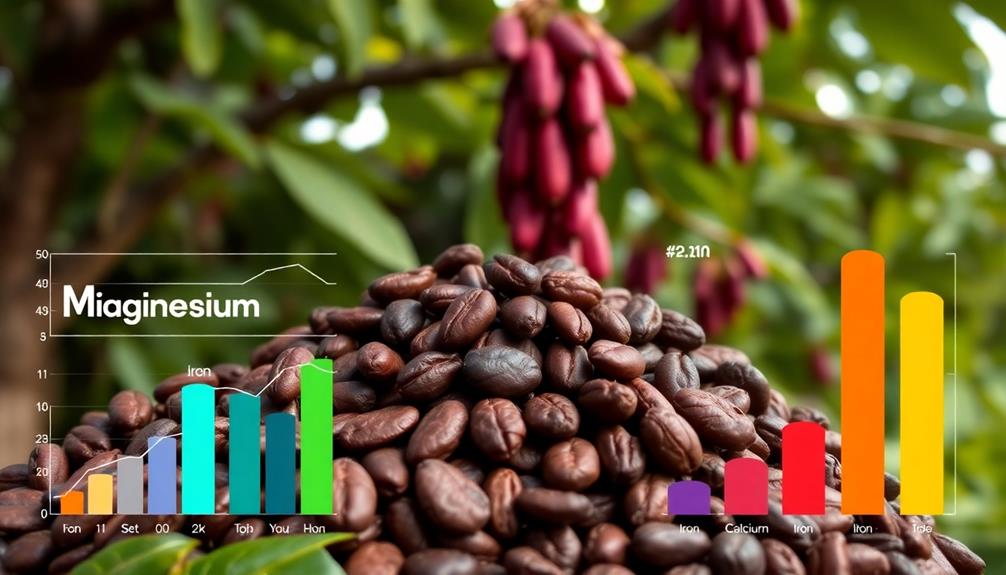I felt like I had found a hidden gem when I first came across raw cacao nibs. These wholesome little nuggets are a powerhouse of health benefits and can be used in so many ways. If you’re unsure of what to do with raw cacao nibs, you’re in the right spot.
In this article, I will guide you through a variety of ways you can incorporate these nutritional powerhouses into your daily routine.
From adding them to your morning smoothie for an extra boost of antioxidants, to using them in baking and desserts to satisfy your sweet tooth, the possibilities are endless.
You can even create homemade energy bars or granola with raw cacao nibs for a nutritious and energizing snack.
Whether you’re a breakfast lover, an ice cream enthusiast, or a fan of savory dishes, there’s a way to enjoy raw cacao nibs in every meal.
So, let’s unravel the mystery and unlock the full potential of these precious gems together. Get ready to embark on a delicious and healthful journey with raw cacao nibs!
Key Takeaways
- Raw cacao nibs are a versatile superfood that can be used in both sweet and savory dishes.
- They have a rich and intense flavor, adding depth and complexity to any recipe.
- The satisfying crunch of cacao nibs makes them a great topping or garnish for a variety of dishes.
- Cacao nibs are packed with antioxidants, enhancing the nutritional value of meals while providing pure pleasure.
Understand the Health Benefits of Raw Cacao Nibs
Did you know that raw cacao nibs pack a powerful punch of health benefits? These little nibs are not only delicious but also highly nutritious.
They are rich in antioxidants, which help protect our cells from damage caused by free radicals.
Raw cacao nibs are also a great source of minerals such as magnesium, iron, and zinc.
Incorporating raw cacao nibs into your diet is easy and versatile. You can sprinkle them on top of your oatmeal or yogurt for a crunchy texture and a boost of flavor.
Another way to enjoy raw cacao nibs is by adding them to your smoothies and drinks. They give a rich, chocolatey taste without the added sugar.
So why not start reaping the benefits of raw cacao nibs today?
Incorporate Raw Cacao Nibs into Smoothies and Drinks
Blend these delicious little chocolate morsels into your favorite smoothie or drink for a burst of rich flavor and added crunch. Raw cacao nibs are a versatile ingredient that can elevate your beverage experience. Here are five creative ways to incorporate raw cacao nibs into smoothies and drinks:
- Sprinkle a handful of raw cacao nibs on top of your smoothie for a satisfying crunch.
- Blend raw cacao nibs with frozen bananas, almond milk, and a touch of honey for a decadent chocolate smoothie.
- Add raw cacao nibs to your morning coffee or tea for a subtle chocolatey twist.
- Mix raw cacao nibs into homemade nut milk for a creamy and nutritious beverage.
- Create a refreshing summer drink by infusing water with raw cacao nibs and fresh fruits.
In addition to smoothies and drinks, raw cacao nibs can also be used in baking and desserts. Transitioning into the next section, let’s explore how to incorporate raw cacao nibs in various sweet treats.
Use Raw Cacao Nibs in Baking and Desserts
Get ready to take your baked goods and desserts to the next level by incorporating these delectable chocolate morsels. They add a burst of rich flavor and a satisfying crunch, just like sprinkling fairy dust on your treats.
Use raw cacao nibs in chocolate making to enhance the depth of flavor and provide a delightful texture. Add them to brownie batter, cookie dough, or cake mix to infuse a natural chocolate taste that is unmatched.
But raw cacao nibs aren’t just for baking. They can also be incorporated into homemade skincare products, such as body scrubs and face masks, to provide antioxidants and nourish the skin. Their high content of flavonoids and minerals make them a perfect ingredient for enhancing the overall quality of your desserts and skincare routine.
Now, let’s explore how to create homemade energy bars or granola with raw cacao nibs.
Create Homemade Energy Bars or Granola with Raw Cacao Nibs
Elevate your snacking game by whipping up your own batch of homemade energy bars or granola, incorporating the irresistible crunch and rich flavor of raw cacao nibs. These versatile nibs add a nutritional boost to your homemade treats, providing a deliciously satisfying snack that will keep you energized throughout the day.
When making your energy bars or granola, consider the following:
- Mix raw cacao nibs with nuts and dried fruits for a delightful combination of textures and flavors.
- Add raw cacao nibs to your granola mixture for a crunchy twist that enhances the overall taste.
- Use raw cacao nibs as a topping for your energy bars or granola, adding an extra layer of decadence.
- Experiment with different combinations of ingredients to create your own unique energy bar or granola recipe.
By incorporating raw cacao nibs into your homemade energy bars or granola, you can create a delightful and nutritious snack that will satisfy your cravings.
Transitioning into the next section, let’s explore how to enhance your breakfast with raw cacao nibs.
Enhance Your Breakfast with Raw Cacao Nibs
Transform your morning meal into a decadent delight by sprinkling a handful of nature’s chocolate chips onto your breakfast bowl. Incorporating raw cacao nibs into your morning smoothie is an excellent way to boost both the flavor and nutritional value of your favorite blend. These small, crunchy nibs pack a powerful punch of antioxidants, fiber, and essential minerals like magnesium and iron. Simply blend them into your smoothie for a rich, chocolatey taste that will satisfy your cravings and provide a natural energy boost to start your day off right. If you prefer a warm and comforting breakfast, enhance your oatmeal with raw cacao nibs. The combination of creamy oats and the slight bitterness of the cacao nibs creates a deliciously balanced flavor profile. Next, we’ll explore how to make a healthy trail mix with raw cacao nibs.
Make a Healthy Trail Mix with Raw Cacao Nibs
When it comes to making a healthy trail mix, raw cacao nibs can be a great addition. I like to combine them with a variety of nuts, seeds, and dried berries to create a portable snack that is packed with nutrients.
To add a little extra flavor, I also sprinkle a touch of sea salt over the mix, creating a delicious sweet and salty combination that is sure to satisfy any cravings.
Combine with Nuts, Seeds, and Dried Berries for a Portable Snack
Mix raw cacao nibs with nuts, seeds, and dried berries for a delicious and convenient snack on the go. This portable snack alternative provides a nutritious option that surpasses traditional processed snacks. Here is a nutritional value comparison of these ingredients in a 2 column and 5 row table:
| Ingredients | Nutritional Value |
|---|---|
| Raw Cacao Nibs | High in antioxidants and fiber |
| Nuts | Rich in healthy fats and protein |
| Seeds | Excellent source of vitamins and minerals |
| Dried Berries | Packed with antioxidants and fiber |
By combining these ingredients, you create a snack that not only satisfies your taste buds but also provides numerous health benefits. The raw cacao nibs add a rich chocolate flavor and provide a natural energy boost. The nuts, seeds, and dried berries contribute a crunchy texture and a wide range of essential nutrients. For an added touch of flavor, consider sprinkling a touch of sea salt over the mix to create a sweet and salty combination.
Add a Touch of Sea Salt for a Sweet and Salty Combination
After combining raw cacao nibs with nuts, seeds, and dried berries for a portable snack, another delicious option is to add a touch of sea salt for a sweet and salty combination.
Sea salt not only enhances the flavor of the cacao nibs but also provides a unique twist to the overall taste. The contrast between the sweetness of the cacao nibs and the savory notes of the sea salt creates a delightful sensory experience.
Moreover, sea salt offers alternative uses beyond its traditional role as a seasoning. It can enhance the natural sweetness of various foods, making it an excellent addition to desserts and other dishes. With the addition of sea salt, raw cacao nibs become a versatile ingredient that can be used in various sweet and savory combinations.
Next, let’s explore how to use raw cacao nibs as a topping for ice cream or pudding.
Use Raw Cacao Nibs as a Topping for Ice Cream or Pudding
Sprinkle raw cacao nibs on top of your favorite ice cream or pudding for a crunchy and chocolatey addition. Raw cacao nibs not only provide a delightful texture, but they also offer a unique flavor profile that complements the sweetness of the dessert.
Here are some creative ways to incorporate raw cacao nibs into your sweet treats:
- Create a contrast of flavors by pairing raw cacao nibs with fruits like strawberries or bananas.
- Add a sprinkle of raw cacao nibs to your homemade chocolate sauce for an extra burst of chocolate flavor.
- Mix raw cacao nibs into your ice cream base for a more intense chocolate experience.
- Layer raw cacao nibs between the ice cream or pudding layers for a surprise crunch.
- Use raw cacao nibs as a garnish, adding visual appeal to your dessert creations.
Now that you’ve explored the possibilities with sweet dishes, let’s delve into the exciting realm of experimenting with savory dishes using raw cacao nibs.
Experiment with Savory Dishes Using Raw Cacao Nibs
Enhance the complexity of your savory dishes by exploring the bold and unexpected flavors that raw cacao nibs can bring to the table. Raw cacao nibs, with their intense chocolatey taste and crunchy texture, can be a surprising and delightful addition to your salads. Simply sprinkle a handful of nibs on top of your salad for an interesting twist. Additionally, incorporating raw cacao nibs into savory sauces can add a unique depth of flavor. The bitterness and earthiness of the nibs can balance out the richness of the sauce, creating a harmonious blend of tastes.
To help you get started, here is a table with some ideas for using raw cacao nibs in savory dishes:
| Dish | Raw Cacao Nib Pairing |
|---|---|
| Grilled Chicken | Cacao Nib Rub |
| Roasted Vegetables | Cacao Nib Garnish |
| Black Bean Chili | Cacao Nib Topping |
| Mushroom Risotto | Cacao Nib Infused Cream Sauce |
Experimenting with raw cacao nibs in savory dishes can add a touch of sophistication and intrigue to your culinary creations. Now, let’s move on to how you can enjoy raw cacao nibs as a snack on their own.
Enjoy Raw Cacao Nibs as a Snack on Their Own
Indulge in the pure pleasure of savoring raw cacao nibs all on their own. Experience the rich, intense flavors and delightful crunch with every bite. Raw cacao nibs are a versatile superfood that can be enjoyed as a snack or incorporated into various dishes. Here are some creative ways to enjoy raw cacao nibs:
- Sprinkle raw cacao nibs over your morning oatmeal or yogurt to add a delicious chocolatey flavor and a satisfying crunch.
- Blend raw cacao nibs into your smoothies for an extra boost of antioxidants and a hint of natural chocolate goodness.
- Use raw cacao nibs as a topping for your avocado toast or salad to add a unique and unexpected twist to your savory dishes.
By incorporating raw cacao nibs into your breakfast and using them creatively in savory dishes, you can enhance the nutritional value and taste of your meals while enjoying the pure pleasure of this remarkable superfood.
Frequently Asked Questions
Are there any side effects or potential risks associated with consuming raw cacao nibs?
There are no reported side effects or significant risks associated with consuming raw cacao nibs. However, moderation is key due to their high caffeine content and potential interactions with certain medications.
Can raw cacao nibs be used as a substitute for cocoa powder in recipes?
Yes, raw cacao nibs can be used as a substitute for cocoa powder in recipes. They add a rich, chocolatey flavor and provide health benefits like antioxidants and minerals. Incorporating raw cacao nibs in baking can enhance both taste and nutritional value.
How should raw cacao nibs be stored to maintain freshness and quality?
To maintain the freshness and quality of raw cacao nibs, it is important to store them properly. Here are some tips: store in an airtight container, keep in a cool and dark place, and avoid exposure to moisture.
Are there any specific dietary restrictions or considerations when incorporating raw cacao nibs into meals or snacks?
When incorporating raw cacao nibs into meals or snacks, it is important to consider dietary restrictions. However, it is worth noting that raw cacao nibs offer numerous nutritional benefits such as antioxidants and minerals.
Are there any recommended serving sizes or guidelines for consuming raw cacao nibs for optimal health benefits?
For optimal health benefits, it is recommended to consume raw cacao nibs in moderation. The recommended serving size is generally around 1 to 2 tablespoons per day, as excessive intake may lead to unwanted side effects.
Can Roasted Raw Cacao Nibs Be Used in the Same Way as Raw Cacao Nibs?
Yes, roast raw cacao nibs can be used in the same way as raw cacao nibs. They both can be added to smoothies, baked goods, or eaten as a snack. The roasting process can enhance the flavor of the cacao nibs, making them even more delicious and versatile.
Conclusion
In conclusion, incorporating raw cacao nibs into your diet can be a delicious and nutritious way to boost your health. Raw cacao nibs have a slightly bitter taste, but they offer numerous health benefits. They are rich in antioxidants, fiber, and minerals, making them a great addition to any diet. Some people may argue that raw cacao nibs are too expensive or hard to find, but the potential benefits they offer are worth the investment. So why not give raw cacao nibs a try and add a touch of indulgence to your daily routine? Your taste buds and health will thank you.
